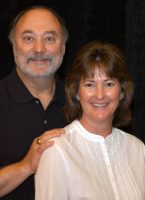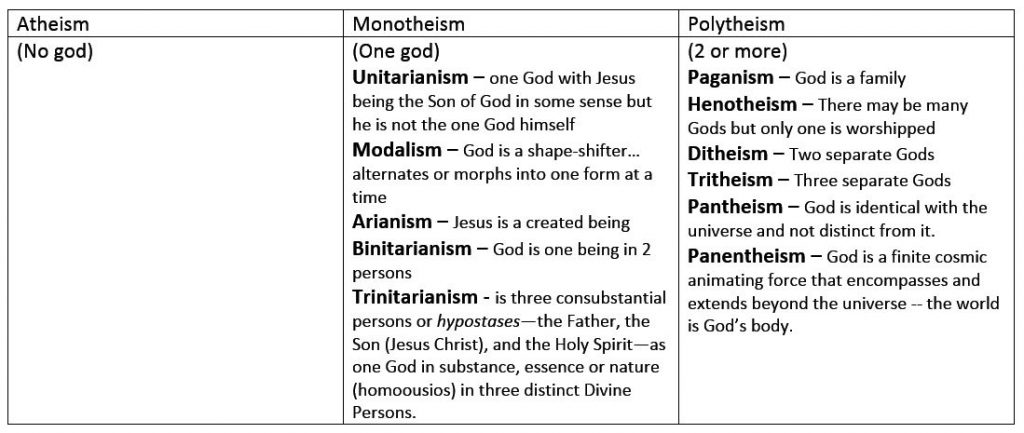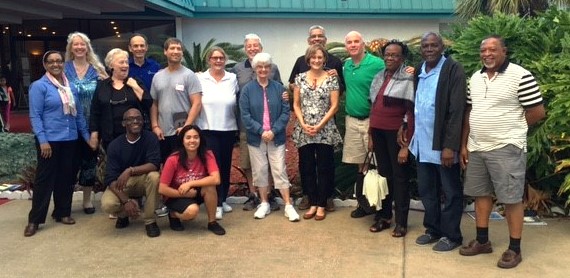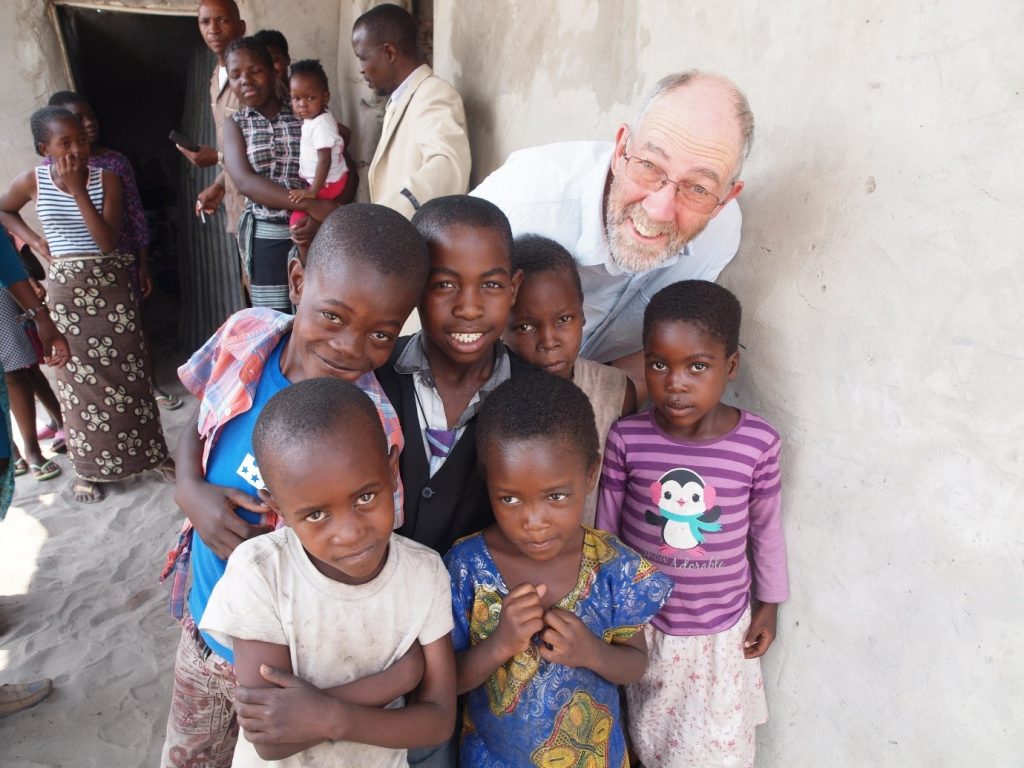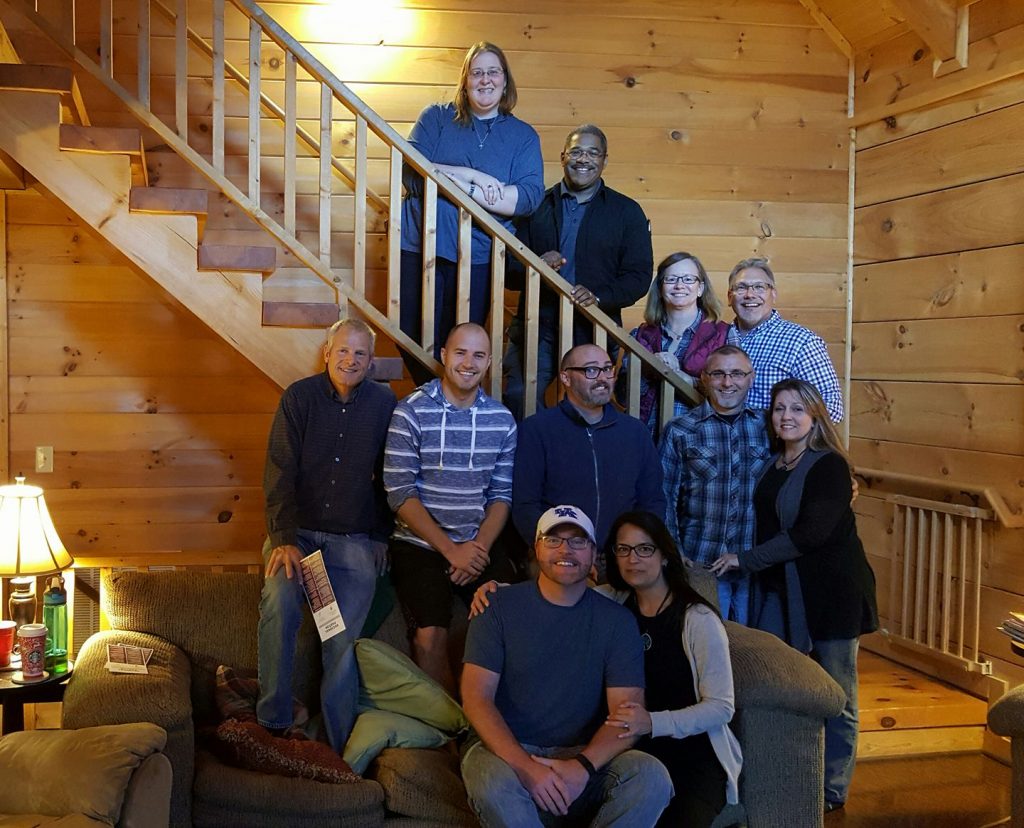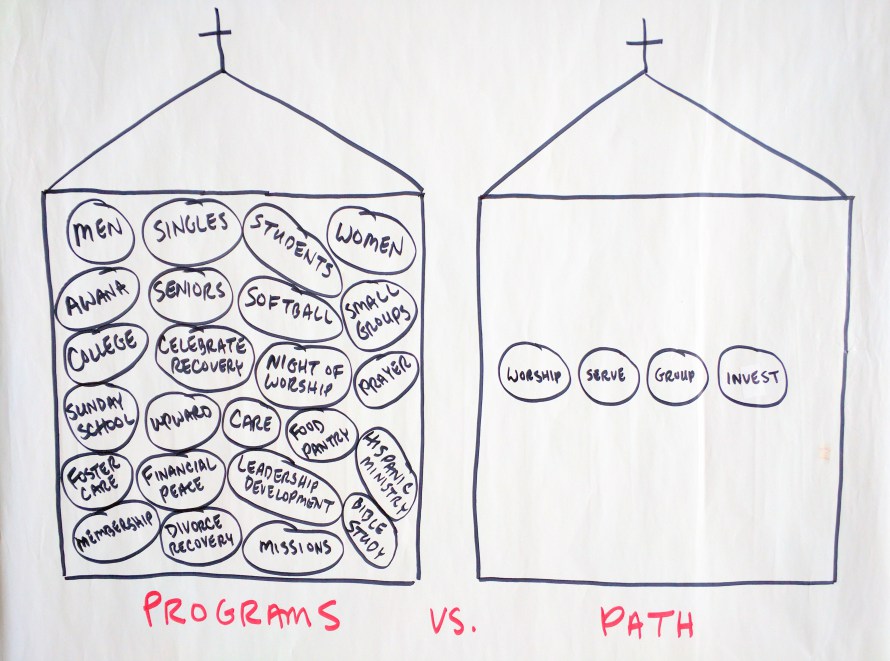By Dr. Gary Deddo

Panentheism is the name of a misleading and misguided approach to thinking about the relationship between God and God’s creation. In general it confuses the being of God with the existence of creation. It also affects, often indirectly, how we approach relationships, our ethics.
Panentheism has been around a long time, taking various forms. It has most often been associated with religions other than Christianity. The Bahai faith, for example, teaches a panentheistic relationship of god with the material creation where creation is said to be “the body of god.” Its adherents believe god is more than creation, yet all of creation is seen as part of, or an extension of god, and thus has the same kind of being as god. Panentheistic teachings tend to fuse creation with god.
More recently, there has arisen a Christianized form of panentheism (we might call it Christo-panentheism). It sometimes shows up among teachers of spiritual formation or spiritual direction. Some of these teachers are aware of their divergence from biblical, evangelical and historically orthodox belief and practice. Others may have been drawn to certain teachings and inadvertently are passing on to others what they don’t fully realize undercuts the essentials of Christian faith, worship and obedience. It’s likely that most of them are well intentioned, even if mistaken. In their desire to overcome a false opposition between God and God’s creation, they blur the distinction between the two. These teachers attempt to use Jesus Christ and his incarnation to justify a confusion and fusion of God’s being with human being.
Why are some Christians attracted to panentheism?
The draw of panentheism for some Christians is that it holds out the promise (which is a false promise) that a fusion and joining of God with his creation in general, and with humans in particular, will result in ethical good. It promises that the perceived differences, disagreements, divisions and hostilities among individuals and groups (economic classes, races, genders) and between humans and the environment will all be resolved. Why? Because, in their view, these are really united (really one), thus there is no reason for the hostility and division. We can all get along. This idea of being naturally and automatically in harmony with God and with each other (and being in some way divine yourself) has strong appeal to many: all is well; all is right. What could be wrong with eliminating our differences? Such a unity and feeling of togetherness will surely bring harmony and end hostility. Or so it seems.
The problem with panentheism
The problem with panentheism is that it involves thinking and speaking as if there is some sort of natural connection (and even identification) between God and some aspect of creation. But affirming that there is a unity of being that results in an automatic and “natural” harmony and flow between God and creation fails to recognize the proper distinction between God and his creation. In the panentheistic view, creation is naturally divine or is infused with the divine. At the level of their being they naturally intermingle since they are or have become the same kind of being. But this thinking of God’s being as extending from or joined to the being of creation is a form of idolatrous thinking. Israel’s first lesson about the creator God is that God is not a creature (not a created being). God is not a material thing. Instead, God is infinitely transcendent over his creation. God made creation, and creation is entirely dependent on God, even for its very existence. God gave creation its existence. Before he spoke, it did not exist. Before God acted, nothing else existed except God. After God acted, the only things that exist other than God are what he made.
Though God is not dependent in any way on creation, all creation is entirely dependent on the action and activity of God. To think or treat any part of creation as God or as somehow divine is idolatry. Israel was given this truth early on and was thereby radically distinguished from all other ancient Near Eastern religions. God alone is to be worshipped and nothing about creation is to be worshipped. Creation can (and should) be honored and respected for what it is—the good creation of God. But creatures commit idolatry when they treat creation as divine in whole or in part—either as God, or somehow as an extension of God’s being. Jesus Christ, his apostles and the church and its Scripture consistently affirm this fundamental truth. It’s part of the bedrock of the Judeo-Christian faith.
Does God’s transcendence mean that he has no relationship with the works of his hands? Does his transcendence mean that the relationship between God and creation is one of absolute opposition? Alienation? Antagonism? Not at all. Before the fall of humanity (and even after), there was a very positive and fruitful relationship of goodness and love and even grace (undeserved favor). The creator God had no trouble interacting with his creation. God’s utter transcendence over creation created no barrier, no disharmony. Rather it was humanity’s distrust and disobedience that broke the harmonious relationship. The sin and evil that becomes a part of the story through human misuse of the good gift of their freedom is what is alien and hostile to God’s good creation and his purposes for it.
The story from Genesis on shows that the absolutely transcendent God who reigns infinitely over his creation has no problem being present to it and interacting with it. Theologians call this God’s immanence. The God of Israel interacts freely with his creation, and is in no way controlled or manipulated or contractually put under obligation by it. God is thus both transcendent over and immanent in (present to) his creation. Those who affirm a natural, automatic panentheistic connection between God and creation confuse God’s being present to things and even being involved with or in things (God’s immanence) with those created things sharing in God’s being and so being divine, or being identified with and naturally joined to God. The error of this panentheistic thinking is that its proponents end up either minimizing or neglecting God’s transcendence over creation or giving creation its own natural transcendence like God’s. With this mistaken approach, God and creation overlap in being, and creation is erroneously given a transcendence that is intrinsic to its very being, like that of God.
But the biblical revelation is clear: God has no natural relationship—no given or fixed connection with his creation, in the sense of creation sharing to some degree in the same kind of being as God. God has an entirely different kind of being (summed up in saying that he is uncreated, eternal, infinite, etc.) than his creation, which is made (and thus finite)—limited in many ways. Creation is entirely dependent on God for its very existence. God upholds everything in existence. Only God has existence in himself (theologians refer to this as God’s aseity)—God is not dependent in any way on anyone or anything. Consequently God’s relationship with his creation comes by his action, by his will (not by necessity), and as the outcome of his decision that expresses his own character and purposes.
If God did not choose to relate to his creation there would be no relationship between God and his creation. The creator God’s relationship with Israel is a real relationship. It involves deliberate acting, interaction and initiative on God’s part. God’s relationship to creation is an act of pure grace! The glory of the God who is, is that he is free to create and love his creation. God does not need creation to be God. God simply is Triune, and that is all that is needed for God to be God. There is nothing about God’s relationship to his creation that is built in, automatic, mechanical, determined by impersonal forces or laws. God is sovereign in his goodness and love over his creation. So Israel was commanded to worship God alone and to repudiate idolatry. God and his creation are entirely different kinds of being. God is uncreated while creation is made—by God.
Panentheism obscures grace
A panentheistic view of the relationship between God and his creation not only misrepresents the transcendence and immanence of God and the created and dependent nature of things made by God, but obscures the free grace of God that is essential to their relationship. Grace is not nature and nature is not grace. Grace is not opposed to nature and does not destroy nature, but grace is freely given out of God’s goodness and love and it rescues, redeems, transforms and perfects his creation and creatures.
Ontologically or philosophically speaking, grace is not necessary—God’s grace is not mechanical or automatic or built into creation. If it were, it would not be grace. Out of his sheer, free grace, God does for creation what it could never do for itself. By grace, creation will be given a perfection that it could never attain out of its own potentials and possibilities. Creation reaches its God-intended end (telos) in and through a real relationship and interaction initiated and completed by God. This decision, relationship and action reached its culmination in the incarnation of the Son of God and his life, crucifixion, resurrection and ascension.
Panentheism obscures the knowledge of God
In the Old Testament and New, even the knowledge of God is not natural. Human beings have no intrinsic power to know God as God truly is. God is known because he chooses to reveal himself and make himself known. The knowledge of God is thus the result of the grace of God. If God chose not to be known, and did not act in a way to make himself known, he would not be known. God has the power to remain private, anonymous. If God did not want to be known, he would not be known! But he chooses and acts to reveal himself. Recall God’s revelation to Moses: “I am that I am.” The early church had a saying: “Only God knows God, and only God reveals God.” This reflects Jesus’ own saying: “Only the Father knows the Son and only the Son knows the Father…and those to whom he chooses to reveal him” (Matthew 11:27 NRSV). If God is known at all, it is because God, by his grace, has revealed himself, thus enabling us to know him as he is.
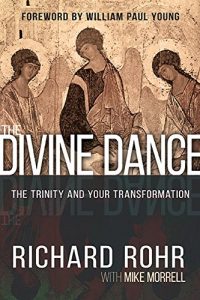 Those thinking panentheistically (like Christian author Richard Rohr, whose latest book is shown at right) speak as if by knowing created things one is naturally also getting to know God because God is somehow in these things and identified with them (thus if you know one, you know the other). These teachers speak of the relationship between God and some aspect of creation the way Jesus speaks exclusively of his unique relationship with God the Father and the Holy Spirit. Recall Jesus’ saying, “He who has seen me has seen the Father” (John 14:9). There we have true identity—Jesus, and he alone, is Immanuel, God with us. However, those thinking in a panentheistic way speak as if creation itself has a natural, built-in mediatorial power to overcome our spiritual blindness and reveal God.
Those thinking panentheistically (like Christian author Richard Rohr, whose latest book is shown at right) speak as if by knowing created things one is naturally also getting to know God because God is somehow in these things and identified with them (thus if you know one, you know the other). These teachers speak of the relationship between God and some aspect of creation the way Jesus speaks exclusively of his unique relationship with God the Father and the Holy Spirit. Recall Jesus’ saying, “He who has seen me has seen the Father” (John 14:9). There we have true identity—Jesus, and he alone, is Immanuel, God with us. However, those thinking in a panentheistic way speak as if creation itself has a natural, built-in mediatorial power to overcome our spiritual blindness and reveal God.
Though Rohr and others who think this way can admit that there is some part or aspect of God that transcends creation, they view other parts (aspects) of creation as being an extension of God’s being. Some of these authors/teachers say creation is the body of God, though they also say there is more to God than his body (in contrast to panentheism, pantheism simply declares that all is God and God is all).
When knowledge of God and relating to God by interacting with some aspect of creation is identical to knowing God, that knowledge of creation becomes a norm for what stands as true knowledge of God. It serves as a natural source of “grace” that ends up coloring all that we think and believe about God. The knowledge of creation then becomes a normative authority that at least equals and therefore rivals Scripture and Jesus Christ as the revelation of God. In some cases, knowledge of creation sounds like it surpasses Jesus Christ the Living Word of God and his authorized Written Word. According to this mistaken view, creation as revelation crowns God’s personal and particular self-revelation by the Word of God and fulfills them. Aspects of creation are then presented as unique and even necessary in our knowing of God. Creation (and particularly the human spirit) is thereby given divine status. In this wrong-headed way of thinking, the Holy Spirit is often identified with the human spirit, so that there is no need to discern the difference between them. A continuity and natural connection is assumed. Sometimes the arts and often experiences of nature are given the highest revelatory status.
Panentheism puts a mistaken focus on experience
The net result of this panentheistic frame of thought is that the knowledge of God (and our relationship to God) starts with or concentrates on an experience of something created. It is thus focused on everyday experiences, especially ones we have some control over. Our relationship to God is thus approached from a center in ourselves, and is understood and evaluated in terms of the quality of our experiences. Such a “spirituality” can lead to seeking to have a series of certain experiences. It can lead to persons comparing experiences one to another and to feelings of superiority or inferiority. A danger arises in this preoccupation with oneself and the quality of one’s experiences. Such panentheistic thinking shares in teachings that are offered by sub-Christian forms of mysticism.
Panentheism mistakenly tries to eliminate created differences
What drives many of these teachers and followers in a panentheistic direction is a reaction to and desire to correct a view and understanding of God being at a distance, of God being opposed to or against his creation. Sometimes this problem is identified as a dualism. While it’s true that thinking of God as unapproachable (even hostile to creation) can lead to division, abuse, violence and injustice, the biblical story tells us that there are real distinctions (by God’s design) that exist between God and his creatures, which are there to bless, not curse. These created distinctions (differences) are thus good. It is evil that misuses and takes sinful advantage of them. But the solution to this evil is not to eliminate the good created differences, especially those between God and humanity. God’s solution is to redeem those created differences so that they are all used to bless, uplift and perfect—all for the purposes of love. Good created difference is what allows for the free exchange of life-giving gifts! If all were the same, there would be no reason for relationship, for life-giving gift exchange. There would be no need for or room for true God-like love, fellowship and communion.
In order to address the misuse of the differences, panentheists overcorrect by seeking to eliminate the thought of difference. They promote thinking that the relationship between God and creation is automatic, involving a natural identity, a fusion of being. In their way of thinking, God and creation have the same kind of being—they are coextensive. In a way, this fixes the problem they perceive, but it does so by creating another problem that is just as bad, and possibly worse. They miss the transcendence of God and the grace of God’s relationship to his creation. They miss the fact that God’s relationship to his creation and creatures is a mediated one—that God is connected directly only to Jesus Christ and we are connected by the Holy Spirit to the humanity of Jesus Christ who is the one and only Mediator between God and humanity (1 Timothy 2:5). There is thus no natural, non-mediated relationship of God with his creation. The relationship that he has established with it is based on God’s willing choice that is all about grace. And while it’s true that God’s grace reaches down to the roots of our human being, and in that sense affects our being (ontology), that grace does not give us a different kind of being. Rather, it perfects our human being.
What, if anything, can we learn about God from nature?
God may use aspects of his creation as created signs to point to him and at the same time away from themselves as objects of devotion. Recall how Paul and Barnabas, in horror, rejected the idea that anyone would worship them! Creation (apostles included) has no intrinsic power or ability to connect, relate or reconcile us to God. Nature is not divine—it cannot save. Nature is now fallen in every and all aspects—it is distorted, not even able to fulfill its natural harmonies and created goodness. All of creation needs to be reworked, re-headed up, or recapitulated, as Paul puts it in Ephesians 1:10.
Since God is not a creature and nature is not a piece or part of God, knowing God or relating to God cannot be the same as knowing some aspect of a created thing. An analogy might be the difference between knowing and being acquainted with a work of art by a certain artist on the one hand, and on the other actually meeting, conversing with and having a life-long close relationship with that artist. Some speculations about the artist based on contemplating their works of art might turn out to be true. However, one could never know the artist well without meeting him or her in person. But once you’ve met and conversed with the artist, then you can interpret and understand the artwork in the light of that knowledge. At that point you would no longer be merely speculating based on second-hand knowledge. Therein is the huge difference between knowing something about an artist compared to knowing the artist in person, face-to-face, having a relationship with him or her. A work of art can only serve as a kind of witness, or parable or sign, concerning the artist. It can never be equivalent to the being of the artist. A work of art has a different kind of being than the artist.
That is why the early Christian Nicene Creed declares that Jesus Christ was “begotten from the Father, not made.” Although the teachers and representatives of the early church who drafted the creed indicated in multiple ways that Jesus was divine in the same sense as the Father and Spirit, they used this phrase to communicate by way of analogy that what is begotten is of the identical kind of being as the begetter. Horses beget horses, humans beget humans, etc. What is made is of an entirely different kind of being. Jesus alone is of the identical kind of being as the Father (homoousios to Patri—“of one being with the Father”—is how the Greek-speaking authors of the Creed put it).
The problem of speculating about the artist when the only evidence the viewer has is the artwork, is greatly heightened when the viewer comes at the artwork with suspicion and distrust concerning the artist. An interesting crisis would ensue for such a person if the distrusted artist were to walk into the gallery and there demonstrate convincingly to the viewer that they were actually good and faithful, forgiving and loving, and wanting a good and right relationship with the viewer, and had, in fact, done everything on their part, at their own expense, to make that right relationship happen, and that’s why they had now come into the gallery! This made-up scenario is a parable of the gospel itself, and understanding it depends upon being able to recognize the decided difference between the work of art and the artist. It’s a huge difference—but one that in no way denies an indirect connection between the two. It also affirms the clear priority of knowing directly (in person), in great contrast to knowing indirectly something about a person through their creations.
It’s all about the grace of God
Our knowledge of God, and the source of our salvation, comes about through the agency of God, the choice of God, the action of God and thus the grace of God. This grace comes to us by God’s self-revelation and self-giving mediated by Jesus Christ. It’s not provided by the knowledge of nature or by the exercise of nature’s powers. The transcendence of God is no barrier to God’s being in real and intimate relationship with his creation (a relationship always achieved through the mediation of God’s grace). We have, in the end, a real relationship initiated and established between the transcendent God and his finite and contingent/dependent creation, all by his grace, by virtue of his mediation. God remains God and creation remains creation in this fellowship and communion of grace for all eternity. That is part of the glory—there is a unity that maintains the difference and distinction of being. The difference between God and humanity is not obliterated, but sustained and glorified. Creation is good—just by being God’s creation, not by being an extension of God.
Three types of union with distinctions
An orthodox understanding of Incarnational Trinitarian theology maintains the important distinctions between the three kinds of union:
- Union that is eternal and internal in the Trinity (perichoresis)
- The union of divine and human nature in the One Person of the Son of God (the hypostatic union)
- Our union with Christ by the Holy Spirit (the saving union, sometimes called the economic union)
In the first union (the perichoretic, Trinitarian union of God) there is, uniquely, oneness of being. The Father, Son and Holy Spirit are all divine in the same way. They are united in being.
In the second union, the divine nature of the eternal Son of God, via the Incarnation, did not turn into human nature (nor vice versa). The divine Son of God did not cease being the divine Son and turn into a man called Jesus, nor is Jesus a man who turned into a divine being. The two natures (divine and human) are joined in the one Person of the divine Son in such a way that the divine nature remains what it was, and the human nature remains fully human (though sanctified and regenerated in Christ).
In the third union, which pertains to salvation, we do not become the person of Jesus when by the Holy Spirit we are joined to Jesus’ human nature and united to him in that saving way. Instead, we become sanctified human beings, sharing in Christ’s own sanctified humanity. We do not become divine, and we do not become Jesus; and he does not become any of us. Our saving union with Christ maintains the difference (distinction) of our persons.
It is thus important to note that there was not and is not a fusion of being or natures in Jesus’ incarnation or in our saving union with Jesus by the Spirit. Even though we use the word union to describe all three of the above noted relationships, there are crucial differences. In each case the union is of a different sort. Many are confused by this, or have never been taught properly (which is why some avoid the topic of our union with Christ altogether). However, this is standard, orthodox Christian teaching that does justice to the whole of biblical revelation.
The serious error of Christo-panentheism
Some have tried to use either the perichoretic union of the Trinity (#1, above), or the union of the Incarnation (#2) to make a case for panentheism. The result is what we might refer to as Christo-panentheism. The problem with this approach is that it obliterates the differences among the three aforementioned kinds of union. Trading on that confusion, Christo-panentheism turns the idea of the unity or union that applies to Jesus Christ alone into a generic principle that applies to all relationships within creation and between creation and God. It takes the one-of-a-kind and different unions that apply only to the Trinity and only to the incarnation of the Son of God, and makes them out to be simply particular instances of a generic category of relationship, a unity-oneness, that applies as a built-in given to all of creation.
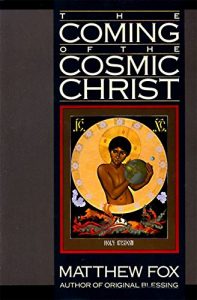 From this (false) perspective, unity is taken to mean a kind of ontological fusion of God with creation that becomes a general feature of all creation because somehow creation is mystically related to the “cosmic Christ” (the mistake made, for example, in the book shown at right). In order to move from a particular and one-of-a-kind understanding of Jesus to him being merely exemplary of what is true everywhere and all the time, a radical distinction is made between Jesus and the “cosmic Christ.”
From this (false) perspective, unity is taken to mean a kind of ontological fusion of God with creation that becomes a general feature of all creation because somehow creation is mystically related to the “cosmic Christ” (the mistake made, for example, in the book shown at right). In order to move from a particular and one-of-a-kind understanding of Jesus to him being merely exemplary of what is true everywhere and all the time, a radical distinction is made between Jesus and the “cosmic Christ.”
Taking the absolutely unique relationships found in God and in Jesus Christ and applying them in the same way to creaturely existence in general makes a serious error. But further, none of the three relationships mentioned above, as depicted in biblical revelation, indicate a kind of union that amounts to an identity of those related, so that there is no difference, so that the things in relationship are interchangeable, so that our knowing and relating to one is the same as knowing and relating to the other.
The perichoretic relationship that applies only to the Triunity still maintains the difference (distinction) of the divine Persons for all eternity. There never was a time when God was not Father, Son and Holy Spirit. Divine unity does not undo the difference or fuse the Persons. They do not become identical and/or interchangeable. But in the eternal life of God they so indwell one another that while remaining distinct in Person they are united in being. This is standard, historically orthodox Christian understanding.
Likewise, in the union of the divine and human natures in the one person of the Son, the two natures are not “divided, separated, confused or changed into one another” (as stated in the Chalcedon Creed or Definition so as to avoid error in speaking of Christ). The two natures remain distinct even while being together in the Person of the Son. But these two natures are not related in a perichoretic way like the Persons in the Trinity are related. The divine nature is eternal and divine. The human nature is creaturely and limited and not eternal and remains human even if sanctified and made immortal (glorified). The human nature is not intrinsic to the eternal existence of the Son’s divine nature. Human nature is joined by an act of grace to the Person of the Son. So the unity of the natures in Jesus Christ does not result in their fusion or confusion.
Finally, our union with Christ by the Holy Spirit does not mean we are Jesus or that Jesus is us. We remain distinct and “other” as persons in this saving unity. Jesus remains Lord, and we are not (and never will be). Jesus is to be worshiped and we are not. And in that saving union with the humanity of Christ, we do not become so united to him that we become additional persons of the Trinity! No, our humanity is maintained and our distinct personhood as creatures is upheld even as we share in the life of Christ and in him we will share in the life of the Trinity, forever. The glory of this sharing is that such fellowship and communion in Christ by the Spirit sustains the difference at the level of our being. That unity-in-difference beautifully displays the glory and grace of the triune God.
Jesus Christ does not represent a generic principle of the union of all things being of the same kind of being and joined in that way. The truth he reveals about the Trinity and about who he is as the Son of God tells us of absolutely unique, one-of-a-kind relationships. Our relationship with God through Christ upholds the very important difference between us and God, between God and creation. He remains Lord over us and all creation. He remains Savior. But that does not mean we cannot share in all that he has for us, even having fellowship (koinonia, sharing in) with his divine nature by the Holy Spirit (2 Peter 1:4).
The nature of sin and evil
Panentheistic thinking concerning the union of all things by virtue of having the same kind of being, badly obscures the nature of sin and evil. Contrary to panentheism, the Bible teaches that all things are not holy. Indeed, God stands implacably opposed to evil. Evil is not a part of God. God will judge all evil—he will sort out good from evil and bring all evil to an end. He will do so to rescue and save his good creation from evil. Because he loves his good creation, God remains vehemently opposed to all that opposes his creation and his good and glorious ends for it. Evil is not overlooked by God. He will never change his mind about it or excuse it.
Contrary to panentheistic reasoning concerning the intrinsic union of all things, evil is not necessary to God or to God’s good creation, nor is it needed for his ultimate purposes. The Bible reveals that evil has been judged and condemned in Jesus Christ while rescuing us from it to bring about a new heaven and earth. God can use evil when that is what we give him, but he uses it against its nature and will. God makes evil do forced labor to serve his holy purposes. And what cannot be redeemed, God eradicates in the end. Evil itself has no future.
Panentheism seems to wrap all differences, even the difference between good and evil, into one giant synthesis so that good and evil work naturally together (perhaps with God’s or Christ’s assistance) to contribute to some greater end. Evil, then, is less than evil because it contributes to a greater good. And in that case, evil is not alien to God and his good creation but rather a necessary means for God to bring about his “higher” ends. And then, good is not entirely good either. For good needs some evil to reach the higher “good.” If that is the case, then God is both good and evil and we should not expect evil to ever be fully eradicated since it is needed as an ingredient in the greater good to come.
Panentheism diminishes the radical difference between God’s good and evil and eliminates the need for both judgment and salvation from evil by an act of God. “Grace” then simply makes sure that all evil ends up contributing in a natural way to good. Notice then, that there is no need for forgiveness. If evil naturally serves good, then evil is justified! In that case, there is no need for the cross of Jesus Christ and his justification of the sinner and deliverance from evil. Evil doesn’t need to be overcome and done away with. It is not the final enemy. It is a friend, perhaps in disguise. It is self-justifying since it is needed to bring about greater good. But that view is not the biblical picture of God’s good, of evil, and of God’s judgment and salvation brought about by the incarnate Son of God who conquered death and evil in his death, resurrection and ascension.
Conclusion
The kind of unity envisioned by panentheism, even if Christianized, comes at a very high cost. The nature of God, the nature of Christ, and the nature of human beings and creation itself are all misrepresented. By blurring the God-ordained distinctions between creature and Creator, panentheistic thinking contributes to a form of idolatry. Along with that, it makes unnecessary the atoning, reconciling and saving work of Christ and his victory over evil on behalf of his good but fallen creation. Panentheism provides a justification for evil while obscuring the free grace of God who chose us and then acted in our place and on our behalf to restore us to fellowship and communion with him as his beloved creaturely and human children. It is for these reasons that GCI does not endorse any teaching that promotes a panentheistic view of the relationship between God and his creation (including human creatures). This view is a false gospel.


